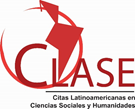Evidencia académica de modificaciones en cavidad nasal y estándar respiratorio, posterior a expansión maxilar implanto-asistida
Resumen
RESUMEN
Desde una perspectiva académica, ha sido factible abordar las diversas etapas de formación del cuerpo humano mediante la exploración de procedimientos innovadores, tales como la rinometría y las tomografías computarizadas, con el fin de evaluar la configuración de la cavidad nasal. Sin embargo, es frecuente la manifestación de una compresión maxilar, lo cual suscita la necesidad de conocer la correlación existente entre el maxilar y el estándar respiratorio. Por lo tanto, esta revisión se centró en base a los criterios metodológicos PRISMA a examinar los efectos y modificaciones en la cavidad nasal y el estándar respiratorio posterior a la expansión maxilar asistida por minitornillos, sin pasar por alto que durante la expansión del maxilar podrían presentarse modificaciones en las suturas del complejo cráneo cérvico maxilo-facial. Aunque los resultados son prometedores y alentadores, se debería considerar cuidadosamente los beneficios y las contraindicaciones de la expansión maxilar como una opción terapéutica ideal para pacientes con deficiencia transversal del maxilar; de tal manera, es posible obtener diversas líneas de investigación que proporcionen una visión integral de la evidencia científica actual, permitiendo desde la academia la generación de protocolos en la toma de decisiones acertadas en el tratamiento de la deficiencia transversal del maxilar.
Palabras clave:
Salud, odontología, enfermedad, anatomía, terapia, aparato respiratorio.
ABSTRACT
From an academic perspective, it has been feasible to address the various stages of formation of the human body through the exploration of innovative procedures, such as rhinometry and computed tomography, to evaluate the configuration of the nasal cavity. However, the manifestation of maxillary compression is frequent, which raises the need to know the existing correlation between the maxilla and the respiratory standard. Therefore, this review focused, based on PRISMA methodological criteria, on examining the effects and modifications in the nasal cavity and the respiratory standard after miniscrew-assisted maxillary expansion, without overlooking the fact that during maxillary expansion there could be modifications in the sutures of the cranio-cervical maxillofacial complex. Although the results are promising and encouraging, the benefits and contraindications of maxillary expansion as an ideal therapeutic option for patients with transverse deficiency of the maxilla should be carefully considered; in this way, it is possible to obtain several lines of research that provide a comprehensive view of the current scientific evidence, allowing academia to generate protocols for making the right decisions in the treatment of transverse deficiency of the maxilla.
Keywords:
Health, odontology, diseases, anatomy, therapy, respiratory system.
Descargas
Descargas
Publicado
Cómo citar
Número
Sección
Licencia
La editorial "Universo Sur", de la Universidad de Cienfuegos, publica el contenido de la Revista "Conrado" bajo una Licencia Creative Commons Atribución-NoComercial-SinDerivar 4.0 Internacional.
© Podrá reproducirse y socializarse, de forma parcial o total, el contenido de esta publicación, sin fines comerciales, siempre que se haga de forma literal y se mencione la fuente.







